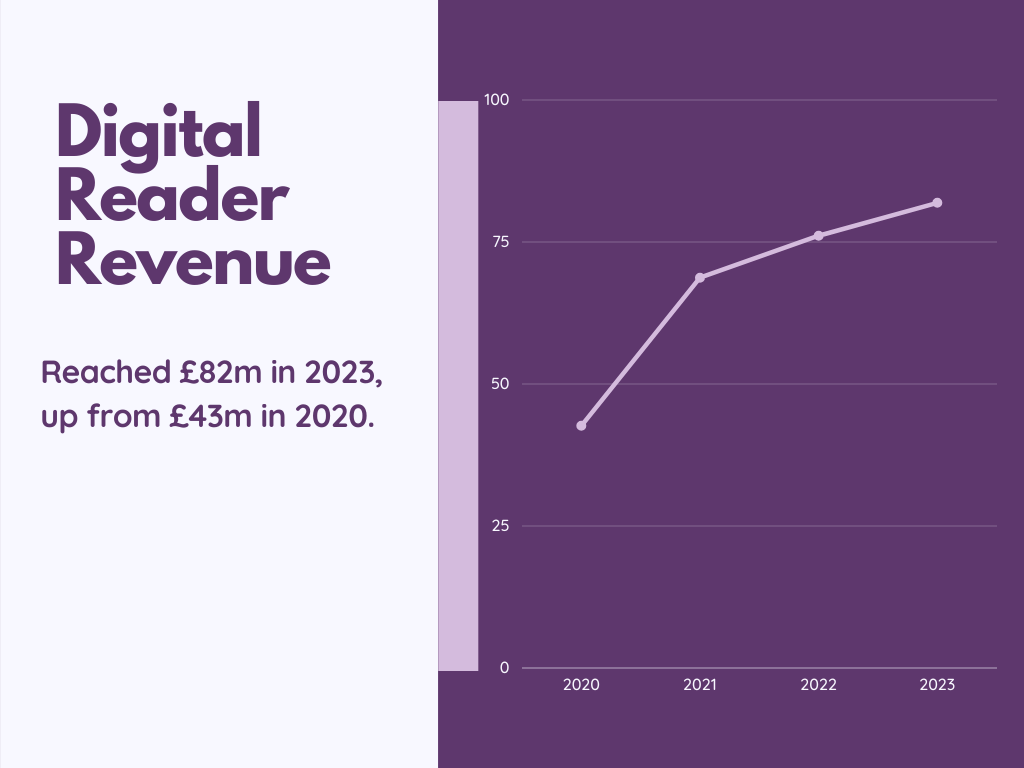The Guardian’s international investment
Plus, how Bloomberg Media CEO Scott Havens is thinking about AI
Hi there,
Earlier this week, The Guardian released its financials for its latest fiscal year.
I’ve always been intrigued by The Guardian because of how its mission & business model work in concert – leading to business decisions that sometimes seem counterintuitive. It was a pioneer in asking for donations instead of charging for digital access, for example, and it turns away categories of advertising that don’t align with its values.
The result is a unique brand & business model that reinforce one another. And the latest financials show how the strategy continues to pay off. We put together a few charts that tell the story of The Guardian’s revenue growth since 2020:
As you can see, The Guardian has seen healthy revenue growth, driven by digital reader revenue and international expansion. (Advertising and UK-based revenue have been roughly flat between 2020-2023.)
After being cashflow positive last year, the company was cash flow negative this year “as planned,” with investments in “editorial teams, newsletters, podcasts and digital capabilities, including continued investment in Guardian US and Guardian Australia, to drive impact and revenue growth globally.”
The company is now poised for continued growth, with lots of room to continue expanding in the United States and Australia, not to mention other parts of the world. For many years it was unclear whether The Guardian could build a sustainable model – but it’s now operating from a position of strength.
Here’s an interesting interview:
Bloomberg Media CEO Scott Havens shared his views on AI. Here are highlights from his interview on the Rebooting podcast.
“When you start playing around with it, you realize the impact it can have on search traffic around the web.”
“I don’t think ‘cut the check’ [from AI companies] saves the publishing industry over the next ten years. They’re never going to pay enough for it. So the question is, how do we as publishers leverage the power of this incredible computing so our users are more engaged, that they’ll… come to us directly.”
“You can see the very obvious workflow productivity tools. We’re deploying them – translation, clipping, synthesizing, distilling, connecting stories with market data – that’s all very good and it should be very accretive to the user experience.”
“We’re building our own Bloomberg GPT [that] we’re going to train on our data so that we can service our clients in a better way.”
And here’s the latest news in digital media:
Publishers:
Health and beauty retailer THG bought CityAM, a local London paper.
The Forbes Union published a study of pay disparity by race and tenure.
The Chicago Cubs launched a direct-to-consumer offering, in a joint venture with Sinclair.
Axel Springer appointed Janina Schüller VP of global strategic partnerships.
Platforms:
Meta’s Q2 revenue grew 11%.
Top AI companies are jointly creating the Frontier Model Forum, which aims to mitigate risks of AI.
OpenAI shut down its AI detection tool because it wasn’t working well.
More than 2 billion logged-in users are watching YouTube shorts.
Thanks for being a part of Business Side’s public beta. Have a great day!
Was this forwarded to you? Subscribe here.




